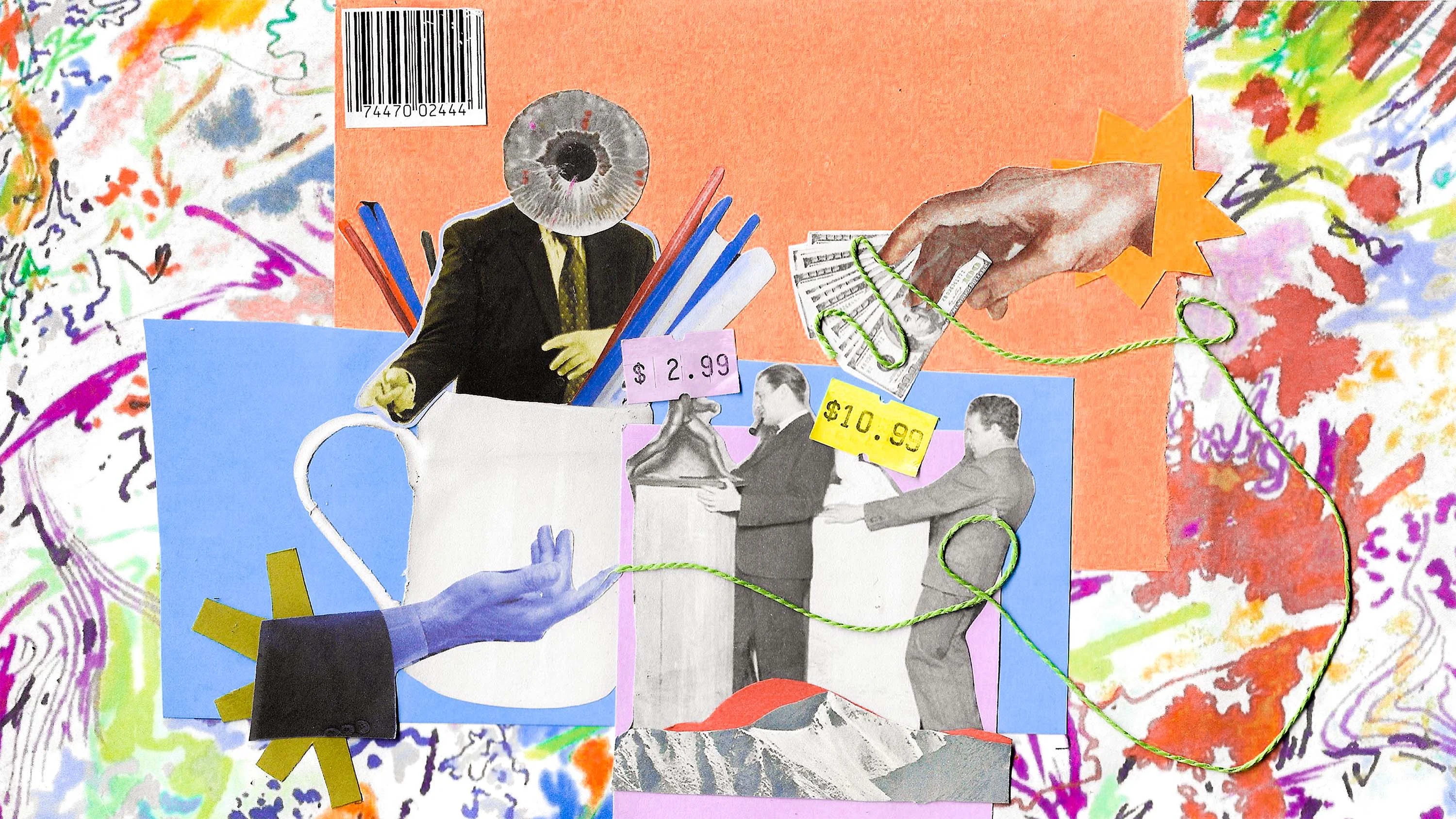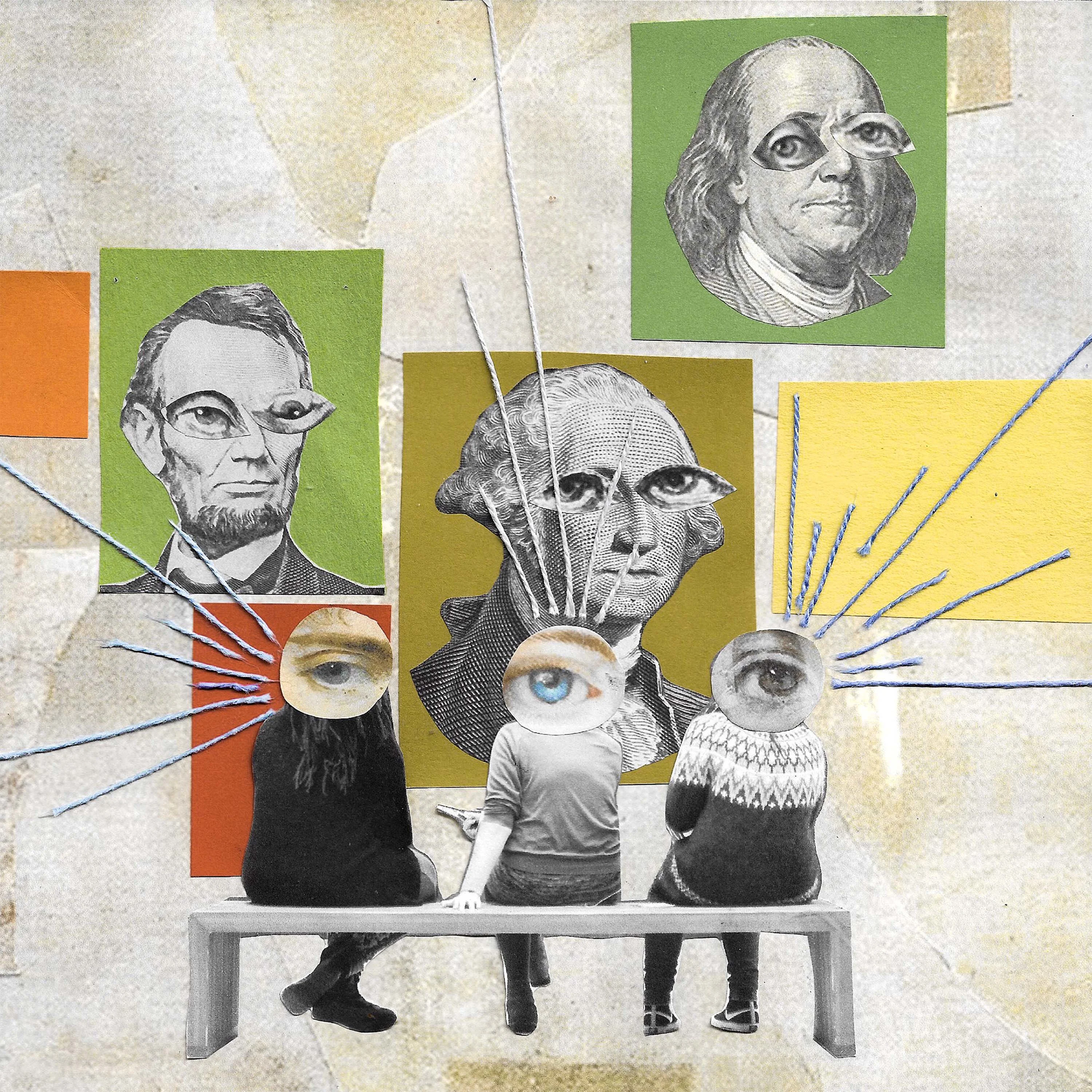

For many artists, making a living off the sale of one’s work alone is an endless challenge. In theory, this is where public arts funding comes in. But as Tea Uglow, Creative Director of Google’s Creative Lab in Sydney, argues, these grants often reward wily arts administrators pushing good governance and corporate box-ticking, rather than the artists with the potential to push culture forward.
Images by Tina Tona.
Integrity means poverty. Success comes posthumously. Art is suffering. These are all truisms from the tea towel in the gift shop of life. Virtuosity, we tell ourselves, cannot be reached whilst earning a living. A salary is an unacceptable compromise, and an income will never equate to artistic freedom. We must instead live off the pittances of part-time work and teaching gigs, or else the indulgence of strangers. Perhaps, if lucky, we may enjoy occasional gallery sales, the support of parents and partners, possibly prizes, and the grants awarded at the caprice of ministers or feudal art-world politics. This, today, is the state of art funding, and this is a problem.
At least, that’s how it appears to the eye of a lapsed artist turned hardened commercial creative like myself. I’ve been a designer, an art lover, a low-level patron. I’ve been an advisor to funding bodies, a consultant to arts councils, a board member for biennales, and for too long, a proxy benefactor for Google. I have been one of many suitors from the intersection of the digital and the arts, a curious enabler of speculative art-like hard-to-describe work. The title for my retrospective, I joke, will be: “Works from the Foyer: 2000 to the Present Day.”

One of the major impediments to radical change is foyers—foyers filled with audiences being counted by salaried staff responsible for the art, and the art’s home. Audiences are hard to count without a box to count them in, which risks miscalculating the artistic value, so we need the seats to count the audience. If the work doesn’t fit in the box or if some people don’t like it, then it’s not the right kind of art for them. Commerce tells us that good books sell a certain number of copies in hardback (but not too many), and we know real art when we critique it from handouts handed out by the kind of gallery assistant you see at certain galleries after 11am but before 3pm. Monday to Thursday.
I have seen enough art to suggest that the blight is due to the bloated microeconomies that exist between the funding body and the grantee. Successful institutions are compliant, quasi-corporate entities that must feed back, loop in, or “take the temperature” of their stakeholders and major donors, primarily working to sustain the legacy of dead white colonialists. All jolly nice humans, but that is what they do.

The idea that the nice arts organizations are funded by virtue of good governance and infrastructure correlates with the sterility of the art world. We seem to valorize the preservative capacity of museums as much as the works. It is so…right-wing. Meanwhile, statutory bodies spruik mission statements promising a “thriving arts sector,” with a “chance to flourish” by “investing in tomorrow,” and providing access to a “remarkable range of high-quality cultural experiences.” All bingo terminology that is totally detached from the shitty reality of most people making any form of critically appreciated art.
This framing has bred a deep-rooted, cyclical problem of optics. Society wants good art. Art is good culture. Art is political capital. From the collections of the Medicis and Louis XIV to Banksy confronting capitalist, nationalist, socialist, or fascist propaganda—art is power. Art is violent. Art is tribal.
Art is a great many things that it is no longer allowed to be. We pretend to believe art emerges from raw culture, that unappetizing basement-level grime that eventually becomes Grimes. But really, we think art would suffer if society supported those germinal spaces—the unregulated, risky, and self-administered creative environments—rather than art’s terminals.

Within an artistic system, there are always environments that manifest the catalytic state for rapid evolutions of cultural practice. Generally, they’re self-supported. No formal funding will reach the chaos because funders don’t like chaos—there’s no way to guarantee return on investment. If artists were good at profit-and-loss analysis or could calculate a percentage, I probably wouldn’t be writing this article. (That’s a generalization, but if journalists or politicians could explain budgets competently, then all of us might learn.) The Budget is a few ignorable hours of time spent, but the budget defines every day thereafter.
“We have saved culture,” French Minister of Culture Roselyne Bachelot sang last September, as she announced the 2022 culture budget would exceed 4 billion euros—a 7.5 percent increase from the 2021 budget, which was itself 4.8 percent higher than the one that preceded it. (One is loath to hug politicians, but that is a lot.)
Value exists increasingly in terms of economic benefit, a slice of the GDP. The prosaic funding-by-the-foot model has meant a flourishing of arts administration, of digit wranglers and crowd assessors.
Meanwhile, in 2021, America allocated $167.5 million for the National Endowment for the Arts (NEA). And for those eking out rent from the American system of “public and private entities, tax policies, legislative allocations, donated bequests, restricted endowments, education mandates, and social agendas,” as the NEA so succinctly describes the US funding system, the lexis is dominated by enterprise and economic output. Along with investing in “artists and organizations,” the Australia Council for the Arts has made it its mission to deliver “strategic sector development initiatives that build industry capacity, networks and digital mobility and increase markets and audiences for Australian creative work.”
Value exists increasingly in terms of economic benefit, a slice of the GDP. The prosaic funding-by-the-foot model has meant a flourishing of arts administration, of digit wranglers and crowd assessors. Governance boards are filled with capable hands who are champions of commerce and finance, and happily grok the success of an institution with visitor numbers or fudged accessibility figures.
I’ve seen institutions inflate visitor numbers egregiously. Five-year plans become lexical time bombs; a lack of diversity is addressed by relocating selected works to distant malls with heavy foot traffic. We are funding the future of the arts with a myopic focus on popularity and performative enfranchisement, leaving a legacy of anesthetizing Insta-art. It’s so remote from the needs of artists. As Michael Sollis, Artistic Director, Education, for the Musica Viva Australia chamber-music ensemble, wrote, “the sustainability of our arts primarily relies not on the bricks and mortar, not on having concerts, not on the corporate strength of an organization, but on having a culture where practicing artists are supported and nourished.”
Multidisciplinary artist and designer Nelly Ben Hayoun’s Tour de Moon festival—part of the 2022 UNBOXED: Creativity in the UK season—sought to take a head-on approach to arts funding, offering 850 bursaries for “any nightlife artist, performer, scientist, digital maker, makers of new worlds, playwright, or creative—professional or amateur—to collaborate with the moon in unique ways.” Aimed at the event’s 18-to-25-year-old target audience, the scheme was completely in keeping with the chaotic, freethinking ethos of Ben Hayoun’s practice. Providing opportunities for artists who might not otherwise have access is à la mode. But not à la happening. That’s a problem.

Can we take the minorities out of the foyer, and stop treating them like they’re special, inconsequential, or both? Australia is an interesting case study. In 2018, the New York Times ran a feature asking “Is the Way Australia Funds the Arts a Recipe for Mediocrity?”—a perfect example of a sub-editor removing the need for anyone to have commissioned the 2,500 precious words below. Prime Minister Scott Morrison responded to this crisis in 2019 by reshuffling it out of existence, erasing the culture portfolio, and burying the Office for the Arts in the folio of the Department of Infrastructure, Transport, Regional Development and Communications. Since the Times article, in which several friends express a raw fear that they probably didn’t intend, any remaining arts budget has been eviscerated, co-opted, misattributed, rorted (look it up), dropped, covered in dust, and I think is now under the settee.
And yet, in the last three years, things have happened that hadn’t before. Australian artist-curator Brook Andrew delivered the Biennale of Sydney in 2020 as its first Indigenous director, and then saved it from COVID-related asphyxia with an online transition. Later that year, Indigenous painter Vincent Namatjira won the Archibald Prize for portraiture, another belated first. In March, Back to Back Theatre—a Geelong-based theater company with a neurodiverse ensemble—won the 2022 International Ibsen Award. And last month, Evelyn Araluen won the Stella Prize for her debut book of poetry. There’s even Deaf representation on “Neighbours” these days. I have no solid thesis for why all this might be, except just maybe the pandemic was a novel leveling agent, allowing disabled, neurodiverse, and Indigenous talent to shine.
Is this change, or just aberration?
Every attendee may be equal, but measuring visitor numbers or economic contribution buries the inestimable fortune that art compiles in our hearts and in our minds.
We should be ashamed to support this art world. As it stands, the most rewarded arts organizations are the ones hiring lobbyists and fundraisers ahead of artists. If the sunk cost of processing, assessing, reporting, and distributing funding is too entrenched to reform—cut it. Or reform those bodies to be appointed by the community, to work for artists able to explain art to ministers, rather than explain ministerial decisions to artists. Start redefining what successful arts administration is, and provide for cultural talent that is deserving rather than in need of preserving. Learn to embrace our chaotic failures, and we will give you our triumphs.
This obsession with metrics has decimated us. Infantilized us. Like children, we haven’t tools to prove our value so governments can hear. Every attendee may be equal, but measuring visitor numbers or economic contribution buries the inestimable fortune that art compiles in our hearts and in our minds. Unmeasured and unmeasurable, only the arts can create that je ne sais quoi—a quality we haven’t even words for. Only the arts can conjure a face “that launch’d a thousand ships, And burnt the topless towers of Ilium,” and then make a meme out of Marlowe. It will be the arts that compose the refrain you whistle, and the arts that will dream up a world we can aspire to. It is the arts that will inspire your children, not revenue. It is art that writes the words your family will recite when they mourn you. With the arts, it is the work we must reward, not numbers.

